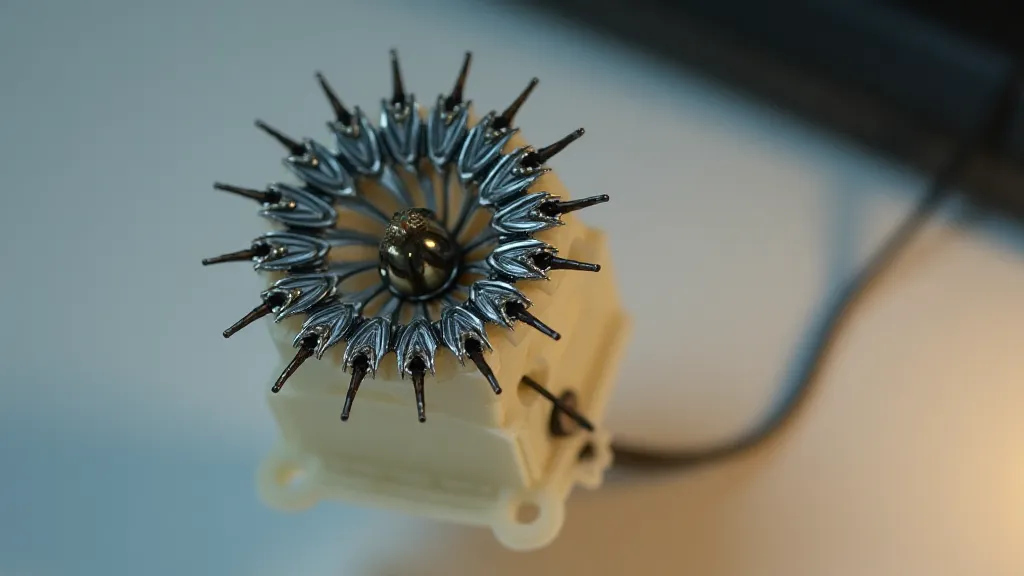Fractured Reflections: Exploring Fractal Antenna Designs for the Modern Ham
There’s a certain melancholy beauty in the aged bellows of an antique accordion. Each crease, each tiny repair, whispers of countless melodies played, dances shared, and lives touched. They represent a time when ingenuity and craftsmanship were paramount; when a piece of equipment wasn't simply manufactured, but *built*, often with a deep personal investment. The same principle, that desire to create something both functional and beautiful, drives many of us into the world of amateur radio, particularly when we choose to build our own antennas. And increasingly, that world is finding its way into fractal antenna design.
For decades, ham radio has been about stretching signals across vast distances, connecting with others around the globe. But with the ever-increasing demand for bandwidth, and the limited space available in urban environments, a new challenge has emerged: how do we achieve efficient radiation in a smaller footprint? This is where the fascinating concept of fractal geometry enters the picture.

What are Fractals and Why Should Hams Care?
Simply put, fractals are geometric shapes that exhibit self-similarity – meaning their patterns repeat at different scales. Think of a Romanesco broccoli: each floret resembles the entire head. Mathematically, they’re often described by fractional dimensions – hence the name “fractal.” The Koch snowflake, the Sierpinski triangle, and the Cantor set are classic examples.
In antenna design, fractals offer a compelling advantage: they can significantly increase the effective electrical length of an antenna within a given physical size. Imagine trying to fit a quarter-wavelength antenna into a tiny space. It’s difficult, often resulting in poor performance. But by incorporating a fractal pattern, we can effectively “fold” that length, creating a smaller antenna that behaves as if it were much larger. This is especially valuable for VHF and UHF bands where wavelengths are shorter. Understanding the intricacies of antenna behavior, the principles that govern radiation, and achieving optimal performance require a fundamental grasp of physics. Many hams delve into subjects like transcendental radiation to deepen their understanding, ensuring they build antennas that truly maximize signal strength and range.
The principle is analogous to the craftsmanship involved in restoring an antique accordion. The original design might be inherently large and cumbersome. A skilled restorer, however, through careful adjustments and clever adaptations, can make it more manageable without compromising its musical integrity. The fractal design represents that same level of ingenuity applied to radio waves.
The Challenges of Practical Fractal Antennas
While the theoretical benefits of fractal antennas are attractive, practical implementation isn't always straightforward. One major challenge is bandwidth. Fractal antennas often exhibit a narrower bandwidth compared to traditional designs. This means they are most efficient within a smaller range of frequencies. Careful design and optimization are crucial to broaden the operational band. Minimizing signal loss and optimizing SWR are constant goals, and a deep dive into topics like transcendental radiation often informs these crucial design choices.
Another consideration is fabrication complexity. While some fractal antenna designs are relatively easy to construct, others involve intricate patterns that can be challenging to create accurately. This is where the ham spirit of ingenuity really shines - finding ways to adapt designs and work around limitations with readily available materials and tools.
Furthermore, the performance of fractal antennas can be highly sensitive to manufacturing tolerances. Even slight deviations from the intended geometry can negatively impact their efficiency. The care taken by instrument makers of old – the meticulous attention to detail – is a valuable lesson here.
Popular Fractal Antenna Designs for the Ham
Several fractal antenna designs have gained popularity among amateur radio operators. The Minkowski antenna, a derivative of the Sierpinski carpet, is a popular choice for VHF and UHF bands. Its compact size and relatively simple construction make it accessible to beginners. The Golbech antenna, with its unique spiral design, also offers excellent performance in a small package.
The Hilbert fractal antenna is another interesting option, particularly for wideband applications. However, it can be more challenging to fabricate accurately due to its complex geometry. The need to maximize operational range and efficiency frequently leads hams to consider various antenna configurations and deployment strategies, many of which are explored in detail for portable antenna solutions.
It's important to note that no single fractal antenna design is universally superior. The best choice depends on the specific application, the available resources, and the operator’s skill level.

Practical Construction Tips for the Modern Ham
Building a fractal antenna doesn't necessarily require advanced electronics skills. Many designs can be constructed using readily available materials like copper tape, PCBs, or even coat hangers. However, accuracy is key.
Start with a well-documented design and follow the instructions carefully. Use precision tools to cut and shape the materials. Double-check your measurements before soldering or gluing anything in place.
Don’t be afraid to experiment! The beauty of amateur radio is the opportunity to learn and innovate. If your first attempt doesn't work perfectly, analyze the results, make adjustments, and try again. Remember the artisan painstakingly repairing the bellows of that antique accordion – each attempt bringing him closer to a restored masterpiece.
Beyond Miniaturization: Broadband Performance
While miniaturization is a primary motivation for using fractal antennas, they can also offer advantages in terms of broadband performance. Certain fractal designs exhibit a wider bandwidth than traditional antennas, making them suitable for applications requiring simultaneous operation on multiple frequencies. This is particularly valuable for digital modes and satellite communication. Achieving a wider bandwidth often requires specialized techniques and careful consideration of impedance matching, areas where continuous learning and experimentation are essential. For those seeking to reduce their footprint while maintaining operational flexibility, innovative antenna designs like those explored in silent sentinel solutions provide valuable insights.
The self-similar nature of fractals can create a distribution of resonant frequencies, effectively “smearing out” the antenna's response and broadening its bandwidth. However, achieving true broadband performance with fractal antennas requires careful design and optimization.
The Enduring Appeal of the Built, Not Bought
The drive to build our own antennas – whether they incorporate fractal geometry or not – is a reflection of a deeper desire: the desire to understand how things work, to create something with our own hands, and to connect with a tradition of ingenuity and craftsmanship. Just as an antique accordion connects us to the music and the makers of the past, building our own antennas connects us to the spirit of innovation that has always been at the heart of amateur radio. There's a profound satisfaction in knowing that you’re using your own creation to communicate with the world, a sentiment as timeless as the enduring beauty of a meticulously restored accordion.

The expanding field of amateur radio often necessitates adaptations for various environments, and considerations for minimizing electromagnetic interference (EMI) become increasingly important. Careful antenna placement and shielding techniques are crucial for maintaining clean signals and avoiding disruptions to surrounding electronic devices. The principles of antenna design are not solely about maximizing range; they also encompass minimizing unwanted emissions and ensuring responsible operation. The challenges of optimizing performance in confined spaces are addressed with creative solutions, often drawing inspiration from unconventional approaches, and demonstrated effectively in resources dedicated to compact antenna deployments.
For those facing restrictions on antenna size or location, creative solutions become essential. Deploying antennas in unconventional ways, such as utilizing existing structures or incorporating them into everyday objects, can overcome limitations and provide access to the airwaves. The ingenuity of hams often leads to inventive antenna designs that blend functionality with aesthetics, transforming ordinary items into effective communication tools.





